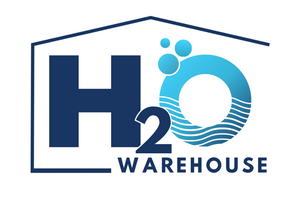Maximising the Benefits of Rainwater Harvesting Systems
Maximising the Benefits of Rainwater Harvesting Systems: A Comprehensive Maintenance Guide
Welcome to H2O Warehouse, your go-to destination for all things water-related! We understand the importance of rainwater harvesting systems in conserving water and promoting sustainability. To ensure you get the most out of your investment, it's crucial to implement an effective maintenance plan. In this guide, we'll walk you through the essential steps to keep your rainwater harvesting system running smoothly year-round.
Understanding Your Rainwater Harvesting System
Before diving into maintenance, let's quickly review the components of a typical rainwater harvesting system:
- Catchment Surface: This is typically the roof of your home or any other surface from which rainwater can be collected.
- Gutters and Downspouts: These direct rainwater from the catchment surface to the storage tank.
- Storage Tank: This is where collected rainwater is stored until it's needed for various purposes.
- Pre-filtration System: Filters remove large debris and contaminants from the collected rainwater before it enters the storage tank.
- Pump and Filter System: If your system includes a pump, it's responsible for distributing filtering the harvested rainwater to where it's needed, such as for irrigation or household use.

Maintenance Schedule
Now that you're familiar with the components, let's outline a maintenance schedule to keep your rainwater harvesting system in optimal condition:
- Regular Inspection: Schedule quarterly inspections to check for any visible damage or signs of wear and tear on the catchment surface, gutters, downspouts, storage tank, and filtration system. Look for leaks, cracks, or clogs that could impede the flow of rainwater.
- Gutter and Downspout Cleaning: Twice a year, preferably before the rainy season, clean out gutters and downspouts to remove leaves, twigs, and other debris that can block the flow of rainwater. This will prevent overflow and potential damage to your home's foundation.
- Tank Cleaning: Annually, empty the storage tank and thoroughly clean the interior to remove sediment, algae, and any buildup that may have accumulated over time. Use a gentle cleaning solution and rinse thoroughly before refilling the tank.
- Filter Maintenance: Check and clean the filtration system regularly, following the manufacturer's recommendations. Replace filters as needed to ensure efficient removal of debris and contaminants from the harvested rainwater.
- Pump Inspection: If your system includes a pump, inspect it annually to ensure it's functioning properly. Check for any signs of corrosion or mechanical issues and lubricate moving parts as necessary.
- Water Quality Testing: Periodically test the quality of the harvested rainwater to ensure it meets health and safety standards for its intended use. This includes testing for pH levels, microbial contamination, and chemical pollutants.
- Winterisation: If you live in a region with freezing temperatures, take precautions to prevent damage to your rainwater harvesting system during the winter months. Drain the storage tank and disconnect any exposed pipes to prevent freezing and cracking.

Benefits of Regular Maintenance
Implementing a proactive maintenance plan for your rainwater harvesting system offers numerous benefits, including:
- Optimal Performance: Regular maintenance ensures that all components of your system are functioning efficiently, maximising the amount of rainwater collected and stored.
- Longevity: By addressing minor issues promptly and preventing major damage, you can extend the lifespan of your rainwater harvesting system, saving you money on repairs and replacements.
- Water Quality: Proper maintenance helps maintain the quality of harvested rainwater, ensuring it's safe for various household uses such as gardening, laundry, and toilet flushing.
- Environmental Impact: By conserving water and reducing reliance on municipal water sources, you're contributing to environmental sustainability and reducing your carbon footprint.
Conclusion
A well-maintained rainwater harvesting system is a valuable asset for any homeowner, providing a sustainable source of water for various purposes. By following the maintenance schedule outlined above and staying proactive in caring for your system, you can enjoy the benefits of rainwater harvesting for years to come. Remember, H2O Warehouse is here to support you every step of the way with high-quality products and expert advice. Happy harvesting!

- Choosing a selection results in a full page refresh.

